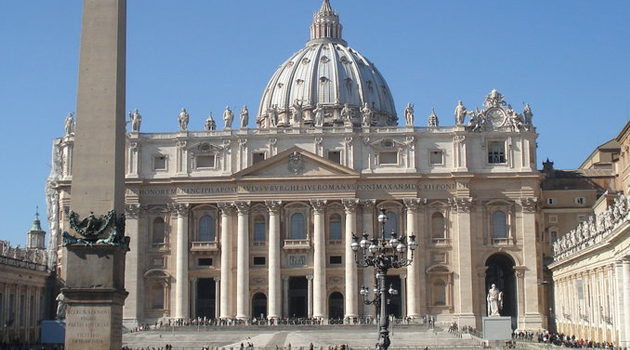 Memories of the Second Vatican Council
Memories of the Second Vatican Council
Fiona McCabe speaks to Bishop Michael Smith about his experience as a stenographer at Vatican II
On 25 January 1959, Pope John XXIII convoked the Second Vatican Council. Occurring less than ninety days into his pontificate, and having succeeded Pope Pius XII, the calling of the Council came as a surprise to many. Although Pope John XXIII had spoken of ‘renewal’ on many occasions, the reaction to his announcement was one of reservation and uncertainty.
Not everyone welcomed the idea of a Council however. Both Pope Pius XI and Pope Pius XII had spent considerable time preparing for the completion of Vatican I; the work of Pius XII taking place about ten years before the announcement of Pope John XXIII. For those who were involved in that meticulous work, the idea of preparing for another council did not seem very appealing. The focus of the Second Vatican Council was to be ecumenical and pastoral, in the hope of embracing the new and developing world, rather than being doctrinal and defensive.
Bishop Michael Smith was a third year theology student studying at the Latern University, Rome when he was asked to be a stenographer at the Second Vatican Council. Having completed a journal paper on Vatican I, and shown a keen interest in its proceedings, he was more than willing to accept the invitation. In all, there were forty two students from various colleges across Rome, who undertook the task of stenographer. The assignment of the stenographer, was to record everything that was said and done at each session of the council. The task also required the students to learn Latin shorthand.
The normal course of university life continued, so taking Latin shorthand during evening classes, was a very demanding experience for the students. All lectures in the university were either in Latin or Italian, mostly Latin, so all already had a certain proficiency in the language. Half those invited were Italian but they all left after the first session. The classes were given by a German Dogmatic theologian, Dr Kennernecht, and eventually, the original number of forty two, was reduced down to twelve. ‘They were very long days, each day beginning at 5.30 a.m.’, the Bishop recalls. This gives an indication of the huge demand that was placed on the students who took part. The Irish College was also a hive of activity. The Bishop describes how all but two of the Irish Bishops stayed in the College.
With regard to the Irish contribution, according to Bishop Smith the Irish prelates were not diligently prepared for the Council. There is no record in the minutes of the Bishops’ Conference meetings, that the Council was discussed at any point. The individual Irish bishops did not make a major contribution to the Council. This was apparent from the very short amount of time that the Irish bishops had to speak. Archbishop Charles McQuaid spoke on behalf of the Irish bishops on two occasions during the debate on the Liturgy. He was representing Cardinal D’Alton who was ill at the time. However, none of the suggestions made by the Irish bishops made any major impact on the final document. Bishop Smith explains that although there were seventy five Irish born bishops at the council, the majority of the contributors to the debates and the drafting of the texts were Belgian, German, Italian and French.
Bishop Smith recalls that the first session was more of a preparatory period, where everyone was ‘finding their feet.’ But from the second session onwards, changes were made, including the imposition of a rule of closure on the speakers, and the council became much more focussed and productive. His group were attached to the Office of the Secretariate of the Council based in Santa Martha, linked to St Peter’s. For the second, third and fourth sessions of the council, a review in English, entitled ‘Council Digest’ was issued. The idea, funded by the Americans, was a summary of all the talks given that morning at the Council. Bishop Smith explained that over two thousand copies of the review were printed and couriered to many cardinals and bishops around Rome every evening.
Bishop Smith’s personal reflection of the Council suggests an element of disappointment post-Council period. As an example, the Bishop believes there was too much of a rush to implement the changes proposed in the Liturgy, especially of the Mass. He felt that the eagerness to get the new changes out meant that many were using their own translations or versions of the liturgy. ‘This is why the recent new translations had to be introduced, to have consistency and fidelity to the texts.’ The bishop also felt that there was not enough emphasis on continuity with what had been discussed at the Council ‘with a lack of balance evident in much discussion.’ He would always consider Blessed John Paul II as the great interpreter of the Council.
Vatican II was a defining moment in the history of the Catholic Church, one which Bishop Smith was proud to be part of. Yet he recalls that while the stenographers did not have to attend every day of the Council, the majority of them did. Personally, he did not miss any days of the Council, as for him, it was an educational and formative opportunity that could not be wasted.
The Second Vatican Council embraced the need for change. What characterised Vatican II was a sense of the duty of renewal, a desire for understanding, and a willingness to encounter history.
To download the pdf version, please click here.

